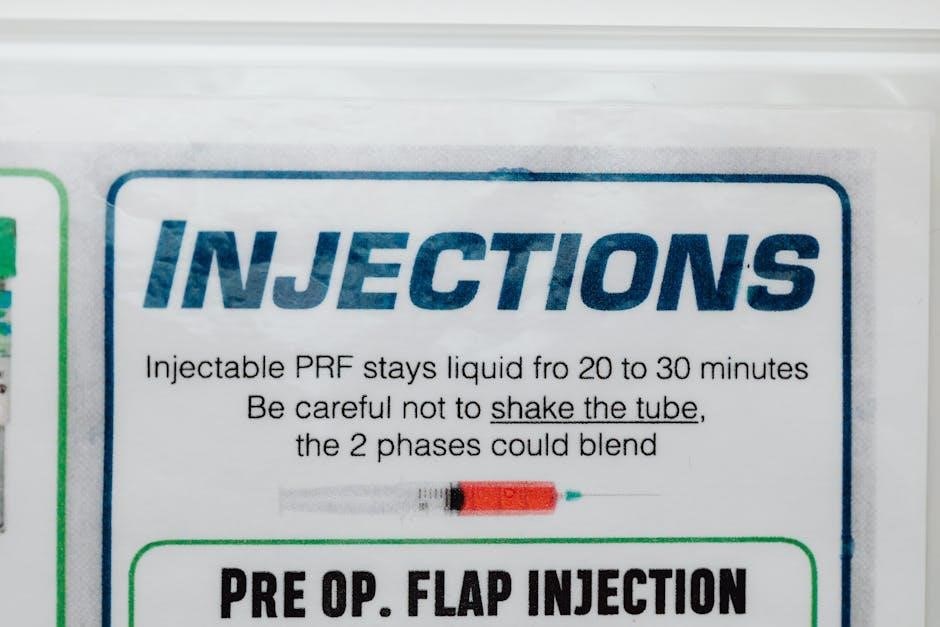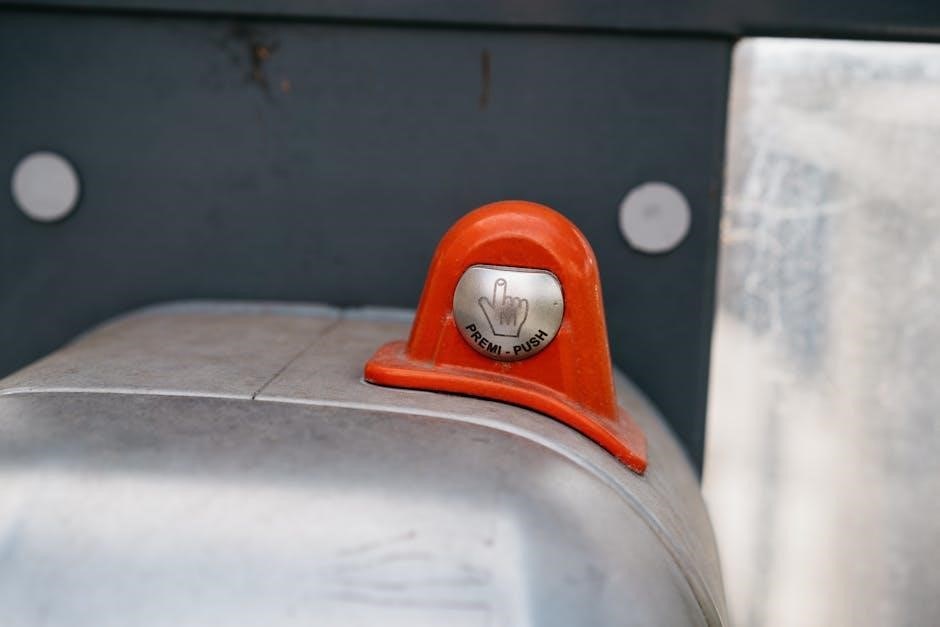

To unlock the full potential of your Hotpoint dishwasher, consulting the user manual is essential. It offers comprehensive instructions on setup, daily operation, and maintenance. This ensures optimal cleaning performance and longevity.
Finding Your Hotpoint Dishwasher Manual
Locating your Hotpoint dishwasher manual is crucial for proper operation and maintenance. Start by checking inside the dishwasher packaging, as the manual is often included with new appliances. If you no longer have the original packaging, don’t worry! Hotpoint provides digital manuals on their official website.
Another option is to visit docs.hotpoint.eu, where you can easily find and download the manual specific to your model. If you can’t find it on the official site, try searching third-party websites that host appliance manuals. Be sure to verify the manual’s authenticity before using it.

Downloading the Manual from Hotpoint’s Website
To download your Hotpoint dishwasher manual from the official website, begin by navigating to docs.hotpoint.eu. Once there, locate the search bar or a dedicated section for appliance manuals. Enter your dishwasher’s model number, which can typically be found on a sticker inside the dishwasher door or on the appliance’s exterior.
After entering the model number, a list of relevant documents should appear. Select the user manual from the search results. You should then be able to view the manual directly on the website or download it as a PDF file for offline access. Ensure the downloaded manual matches your specific model.
Locating Manuals on Third-Party Sites
If you are unable to find your Hotpoint dishwasher manual on the official website, numerous third-party sites offer appliance manuals. These sites often host a wide range of manuals, including those for older or discontinued models. When searching, be sure to include the specific model number of your dishwasher for accurate results.
However, exercise caution when downloading from third-party sources. Ensure the website is reputable and trustworthy to avoid downloading malicious software. Always scan downloaded files with antivirus software before opening them. Cross-reference information with other sources if possible to verify its accuracy.

Initial Setup and Preparation
Proper setup is key! Connect the water and power, add dishwasher salt to prevent limescale, and fill the rinse aid dispenser. Refer to the manual for specific instructions.
Connecting Water and Power Supply
Before using your Hotpoint dishwasher, ensure proper water and power connections. Refer to your user manual for precise instructions. Verify that the water supply valve is easily accessible. The dishwasher should be connected to a cold water supply only. Securely attach the water inlet hose, checking for leaks. Ensure the power cord is plugged into a grounded outlet matching the dishwasher’s voltage. Avoid using extension cords. If unsure, consult a qualified technician. Proper connection prevents malfunctions and ensures safe operation. Always prioritize safety and consult the manual before proceeding with any installation steps. This meticulous approach guarantees optimal performance from the beginning.
Adding Dishwasher Salt
Adding dishwasher salt is crucial for preventing limescale buildup in your Hotpoint dishwasher, protecting both dishes and internal components. Locate the salt reservoir, usually at the bottom of the dishwasher tub. Before the first use, fill the reservoir with water. Then, pour dishwasher salt until it reaches the top. Use only dishwasher salt, not table salt, to avoid damage. Securely close the reservoir cap. Regularly check the salt level and refill when needed. The indicator light will illuminate when salt is low. Using salt ensures optimal water softening, leading to cleaner dishes and a longer lifespan for your appliance. Consult your manual for specific instructions and frequency.
Filling the Rinse Aid Dispenser
To enhance the drying performance of your Hotpoint dishwasher, filling the rinse aid dispenser is essential. Locate the dispenser, typically near the detergent compartment inside the dishwasher door. Open the dispenser cap and carefully pour rinse aid until it reaches the maximum fill line, avoiding overfilling. Wipe up any spills. The rinse aid helps water sheet off dishes, reducing water spots and streaks. Adjust the rinse aid dosage setting, if available, according to your water hardness and desired dryness level. Regularly check the rinse aid level and refill when the indicator light is low. Using rinse aid ensures sparkling clean and dry dishes after each wash cycle. Refer to your user manual for precise instructions.

Loading the Dishwasher
Proper loading is key to your Hotpoint dishwasher’s performance. Arrange dishes strategically, ensuring water and detergent reach all surfaces. Avoid overcrowding. Consult your manual for optimal loading diagrams and techniques.
Proper Loading Techniques for Dishes
Maximize your Hotpoint dishwasher’s cleaning power by employing proper loading techniques. Face heavily soiled items towards the spray arms for optimal cleaning. Avoid nesting dishes, as this prevents water from reaching all surfaces. Ensure that tall items don’t block the spray arms’ rotation. Refer to your dishwasher’s manual for specific loading diagrams tailored to your model. Overloading can reduce cleaning effectiveness, so allow adequate space between items. Proper spacing allows water and detergent to circulate freely, ensuring dishes are thoroughly cleaned. Always remove large food particles before loading. This prevents clogs and improves overall cleaning performance. The goal is to optimize water flow and detergent distribution. By following these guidelines, you’ll achieve sparkling clean dishes every time.
Loading Cutlery and Utensils
Properly loading cutlery and utensils into your Hotpoint dishwasher ensures they are thoroughly cleaned. Separate different types of cutlery to prevent them from nesting together. Place forks, spoons, and knives in designated compartments with handles facing down for safety. Avoid overcrowding the cutlery basket, as this hinders water circulation. Ensure that utensils with food residue are positioned so the spray arms can easily reach them. Some dishwashers have specialized trays for long utensils; use these to prevent them from blocking spray arms. Distribute cutlery evenly to maintain balance and prevent the basket from tipping. Always check that items are securely placed to avoid them falling and obstructing the spray arms. By following these steps, you’ll guarantee that your cutlery and utensils emerge spotless after each wash cycle.
Adjusting Rack Configuration
Optimizing your Hotpoint dishwasher’s rack configuration allows you to accommodate various dish sizes and maximize space. Many models feature adjustable racks that can be raised or lowered to create more room. To adjust the upper rack, look for levers or clips on the sides that release the rack. Fold-down tines on both racks provide flexibility for larger items like pots and pans. Experiment with different configurations to find the best fit for each load. Ensure that items are stable and won’t interfere with the spray arms. Consult your dishwasher’s manual for specific instructions on adjusting your model’s racks. Proper configuration enhances cleaning performance and prevents damage to dishes. By customizing the rack setup, you can efficiently wash diverse loads and achieve sparkling clean results. This ensures that you are using the dishwasher to its fullest potential.

Selecting a Wash Cycle
Hotpoint dishwashers offer various wash cycles for different cleaning needs. The user manual details each cycle, ensuring optimal performance. Select the appropriate cycle for your load type.
Understanding Different Wash Cycle Options
Hotpoint dishwashers come equipped with a range of wash cycle options tailored to various cleaning needs. These options typically include an intensive cycle for heavily soiled items, a normal cycle for everyday use, and a delicate cycle for fragile dishware. Understanding the differences between these cycles ensures optimal cleaning performance while protecting your dishes. Furthermore, quick wash cycles are often available for lightly soiled items requiring a faster turnaround. The user manual provides detailed descriptions of each cycle, including recommended load types and estimated run times. Selecting the appropriate cycle maximizes efficiency and minimizes water and energy consumption, ultimately contributing to cost savings and environmental responsibility.
Choosing the Right Cycle for Your Load
Selecting the correct wash cycle is crucial for achieving sparkling clean dishes while conserving resources. Consider the type and level of soiling on your dishes when making your selection. For heavily soiled pots and pans, an intensive cycle is ideal, while lightly soiled plates and glasses benefit from a normal or eco cycle. Delicate items, such as glassware and fine china, should be washed using a delicate cycle to prevent damage. Overloading the dishwasher can hinder cleaning performance, so ensure dishes are properly spaced. Consult your Hotpoint dishwasher’s manual for detailed guidance on cycle selection based on specific load types. Using the appropriate cycle optimizes cleaning results and extends the lifespan of your dishwasher.
Using the Quick Wash Feature
The quick wash feature on your Hotpoint dishwasher is perfect for lightly soiled dishes needing a fast turnaround. Ideal for after-meal cleanup or when you’re short on time, this cycle provides a rapid cleaning solution. Keep in mind that the quick wash may not be suitable for heavily soiled items, as it prioritizes speed over intensive cleaning. To maximize its effectiveness, ensure dishes are relatively clean before loading. Avoid overcrowding the dishwasher to allow for proper water circulation. Refer to your dishwasher’s manual for the recommended load size and any specific instructions for the quick wash cycle. It’s a convenient option for maintaining cleanliness in a busy household, providing a swift and efficient cleaning solution for everyday use.

Operating the Dishwasher
Operating your Hotpoint dishwasher involves several key steps, from starting the cycle to utilizing features like delay start and child lock. Understanding these functions ensures efficient and safe use.

Starting the Dishwasher
Before initiating a wash cycle, ensure the dishwasher is properly loaded and the appropriate detergent is added according to the manufacturer’s instructions. Verify that the water supply is connected and fully turned on. Select the desired wash cycle based on the load’s requirements, considering options like quick wash or intensive cleaning.
Close the dishwasher door securely. Check that the spray arms are not obstructed by any dishes or utensils. Press the power button to turn on the dishwasher. Then, press the start button to commence the selected wash cycle. The dishwasher will then begin filling with water and proceed with the cleaning process.
Using the Delay Start Function
The delay start function allows you to postpone the dishwasher’s operation to a more convenient time. This feature is useful for running the dishwasher during off-peak hours or when you are away from home. To utilize this function, first, load the dishwasher and add detergent. Select your desired wash cycle.
Next, locate the delay start button on the control panel. Press the button to set the desired delay time, often in increments of hours. Once the delay time is set, press the start button to activate the function. The dishwasher will remain idle until the pre-set delay time has elapsed, at which point it will automatically begin the selected wash cycle.
Child Lock Activation
To prevent accidental operation, especially by children, many Hotpoint dishwashers feature a child lock function. This function disables the control panel, preventing unintended cycle changes or start-ups. To activate the child lock, refer to your dishwasher’s user manual for the specific button combination or procedure, as it may vary depending on the model.
Typically, this involves pressing and holding two designated buttons simultaneously for a few seconds until a lock indicator light illuminates on the control panel. Deactivation usually follows the same process: pressing and holding the same buttons until the lock indicator disappears. When activated, the child lock ensures peace of mind, preventing disruptions to the wash cycle.

Maintenance and Troubleshooting
Preventative care saves time and money over your dishwasher’s lifespan. Refer to the manual for cleaning the filter, addressing error codes, preventing limescale, and resolving drainage issues for optimal performance.
Cleaning the Dishwasher Filter
Regularly cleaning your Hotpoint dishwasher’s filter is crucial for maintaining optimal performance and preventing unpleasant odors. A clogged filter can hinder water flow, leading to poorly cleaned dishes and potential damage to the appliance. Consult your user manual for the specific location of the filter in your model, as it may vary. Typically, the filter is located at the bottom of the dishwasher tub, often near the spray arm.
Before cleaning, ensure the dishwasher is turned off and disconnected from the power supply for safety. Remove the filter assembly, which usually consists of multiple parts that twist or snap together. Rinse each component thoroughly under running water, removing any food particles or debris. A soft brush can be used to scrub away stubborn residue.
Once cleaned, reassemble the filter components and securely place them back into their designated location within the dishwasher. Proper filter maintenance ensures efficient water circulation and spotless dishes with every wash cycle.
Addressing Common Error Codes
When your Hotpoint dishwasher encounters an issue, it often displays an error code on the control panel. These codes provide valuable information about the nature of the problem, allowing for quicker troubleshooting. Refer to your dishwasher’s user manual for a comprehensive list of error codes and their corresponding meanings. Common error codes might indicate issues with water drainage, water inlet, heating elements, or sensor malfunctions.
Before attempting any repairs, consult the manual for recommended solutions. Some error codes can be resolved with simple steps, such as checking the water supply, clearing any obstructions from the drain, or resetting the dishwasher. If the error persists after trying the suggested solutions, it may indicate a more complex issue that requires professional assistance.
Avoid attempting advanced repairs unless you have the necessary expertise. Contacting a qualified appliance repair technician is recommended to diagnose and resolve the problem safely and effectively, ensuring your dishwasher is back in optimal working condition.
Preventing Limescale Buildup
Limescale buildup is a common issue in dishwashers, especially in areas with hard water. It can reduce cleaning effectiveness and damage internal components. Using dishwasher salt helps prevent limescale formation by softening the water. Regularly fill the salt reservoir according to the manufacturer’s instructions;
Rinse aid also helps prevent limescale by promoting water sheeting and reducing mineral deposits. Ensure the rinse aid dispenser is filled. Periodically, run a dishwasher cleaner specifically designed to remove limescale. These cleaners dissolve mineral buildup and keep the dishwasher clean.
Wiping down the interior of the dishwasher, especially around the door seals, can help remove early signs of limescale. Consider using a water softener system for your entire home if you have extremely hard water. This will protect all your appliances.
Following these preventive measures will extend the life of your Hotpoint dishwasher and maintain its cleaning performance.
Troubleshooting Water Drainage Issues
If your Hotpoint dishwasher is not draining properly, several factors could be the cause. First, check the drain hose for any kinks or clogs. Ensure the hose is properly connected and not obstructed. Inspect the dishwasher filter for food debris and clean it thoroughly. A clogged filter restricts water flow.
Next, examine the drain pump for any obstructions. Sometimes, small objects can get lodged in the pump, preventing it from functioning correctly. If you suspect a clogged drain pump, you may need to disassemble it carefully to remove the obstruction.
A faulty drain pump can also cause drainage problems. If the pump is not working, it may need replacement. Also, check the air gap (if installed) for blockages. This component helps prevent backflow into the dishwasher.
Finally, ensure that the dishwasher is level. An unlevel dishwasher can interfere with proper drainage. Following these steps can help diagnose and resolve water drainage issues.

Safety Information
Prioritize safety when operating your Hotpoint dishwasher. Adhere to all safety precautions outlined in the user manual. Ensure proper use of detergents and know what to do in case of a malfunction.
General Safety Precautions
Before using your Hotpoint dishwasher, carefully review all safety instructions in the user manual. Ensure the dishwasher is properly installed and grounded to prevent electrical hazards. Keep children away from the dishwasher during operation to avoid burns or injuries from hot surfaces or sharp objects. Never attempt to repair the dishwasher yourself; always contact a qualified technician for service. Use only dishwasher-safe detergents and rinse aids, and store them out of reach of children. Do not overload the dishwasher, as this can affect cleaning performance and potentially damage the appliance. Regularly inspect the dishwasher for any signs of damage or wear, and address any issues promptly to prevent accidents.
Proper Use of Detergents
Using the correct detergent is crucial for optimal cleaning and to avoid damage to your Hotpoint dishwasher. Always use detergents specifically designed for dishwashers, as regular soaps can create excessive suds and affect performance. Follow the detergent manufacturer’s instructions regarding dosage, as using too much can leave residue, while using too little may result in inadequate cleaning. Ensure the detergent dispenser is dry before filling it with detergent. For best results, consider using detergents with built-in rinse aid. Store dishwasher detergents in a cool, dry place, out of reach of children. Avoid using hand soap, laundry detergent, or other non-dishwasher detergents, as they can harm the appliance and leave residue on dishes. Regularly clean the detergent dispenser to prevent clogs.
What to Do in Case of a Malfunction
If your Hotpoint dishwasher malfunctions, immediately disconnect it from the power supply for safety. Consult the user manual for troubleshooting steps related to the specific issue. Check for common problems such as clogged filters, blocked spray arms, or issues with the water supply. If the problem persists, do not attempt to repair the dishwasher yourself, as this could void the warranty and pose a safety risk. Contact a qualified appliance repair technician or Hotpoint customer service for assistance. Provide them with the dishwasher’s model number and a detailed description of the malfunction. Keep a record of any error codes displayed on the control panel. Never operate a malfunctioning dishwasher, as this could lead to further damage or safety hazards. Ensure any repairs are carried out by authorized personnel using genuine Hotpoint parts.
Leave a Reply
You must be logged in to post a comment.